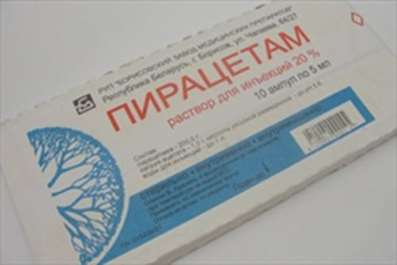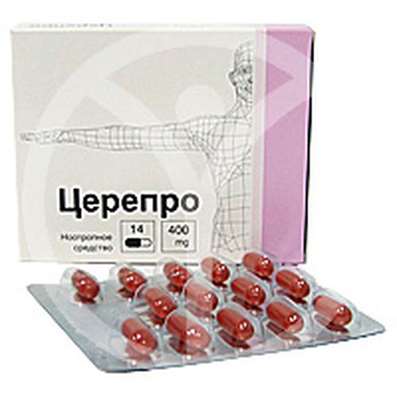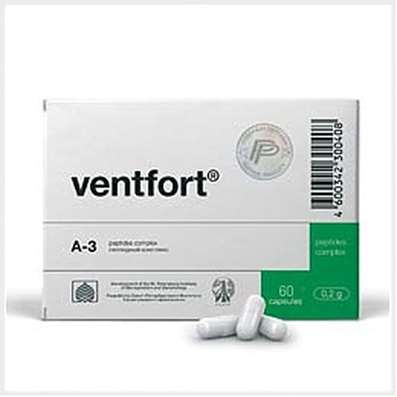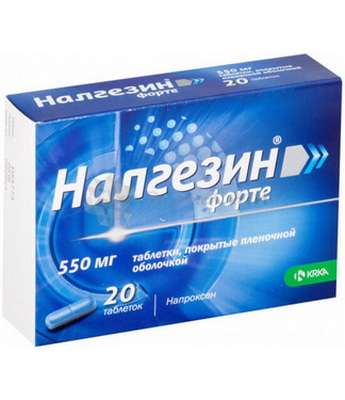Instruction for use: Levocetirizine 5 mg
I want this, give me price
International Nonproprietary Name (INN): Levocetirizine
Pharmaceutic group: antiallergic agent - H1-histamine receptor blocker.
Presentation:
Tablets are Film-coated of 5 mg. 10 tablets in packings Valium planimetric. 1 or 3 packings Valium planimetric along with instructions for use are placed in a pile of cardboard.
Without prescription.
Indications for Levocetirizine
Levocetirizine - a drug that is applied in the case of allergic reactions. This drug affects gistaminozavisimuyu stage allergic reactions, reduces the permeability of blood vessels, limiting the release of mediators (mediators) inflammation. The drug does not prevent the actual release of histamine from mast cells is. At therapeutic doses, virtually no sedative action.
Among the indications for the use of levocetirizine have symptoms year-round or seasonal rhinitis, or conjunctivitis, which are based on allergic reaction accompanied by itching, sneezing, nasal congestion, rhinorrhea, lacrimation, conjunctival hyperemia. Also, hay fever (hay fever), urticaria, and other allergic dermatoses, accompanied by pruritus and rash.
The effect of the drug is short (maximum concentration is achieved after a single dose within one hour), the kinetics of the drug can take it once a day. The equilibrium concentration is reached within two days. The instructions for medical use is written in more detail about the use of levocetirizine in patients with concomitant diseases of the liver and kidneys, as well as about the maximum dose and the recommended duration of treatment.
Levocetirizine belongs to a new generation of antihistamines with good tolerability, low toxicity and high safety in case of overdose. This drug is a highly R-enantiomer, twice exceeding the performance of its predecessor cetirizine.
Trade name of the drug – Levocetirizine
Dosage Form: film-coated tablets
Active substance:
levocetirizine dihydrochloride - 5.0 mg;
Excipients: Microcrystalline cellulose - 53.2 mg Croscarmellose Sodium - 3.8 mg pregelatinized starch - 32.04 mg Colloidal silicon dioxide - 0.48 mg magnesium stearate - 0.48 mg;
coated tablets: Opadry II White - 3.8 mg (lactose monohydrate - 1.37 mg, Valium - 1.06 mg titanium dioxide - 0.99 mg macrogol 3000 - 0.38 mg).
Description:
Tablets are round biconvex, white film-coated. On cross-section - the inner layer of white or nearly white.
Pharmacotherapeutic group: antiallergic agent - H1-histamine receptor blocker.
ATX code: R06AE09
Pharmacological Properties of Levocetirizine
Pharmacodynamics
Levocetirizine - is the R-enantiomer of cetirizine; concurrency antagonist of histamine; blocking the H1-histamine receptor affinity which is 2 times higher than that of the cetirizine. Levocetirizine influences gistaminozavisimuyu stage of allergic reactions; decreases eosinophil migration, reduces vascular permeability limits the release of inflammatory mediators. It prevents the development and facilitates the allergic reactions, has protivoekssudativnoe, antipruritic effect; practically no anticholinergic and antiserotoninovogo action. At therapeutic doses, virtually no sedative action.
Pharmacokinetics
Pharmacokinetic parameters levocetirizine vary linearly with the dose and do not differ from the pharmacokinetics of cetirizine.
Absorption: Rapidly and completely absorbed by ingestion. Eating does not affect the completeness of absorption but reduces its speed. The maximum concentration (Cmax) is reached after 0.9 hours and the plasma is 270 ng / ml. Constant level of concentration of the drug is achieved after two days of receipt.
Distribution: Binding to plasma proteins - 90%. The volume of distribution (Vd) is 0.4 l / kg. Bioavailability is 100%. Penetrates into breast milk.
Metabolism: Less than 14% of the drug is metabolized in the liver by N- and O-dealkylation with a pharmacologically inactive metabolite. Due to the low level of metabolism and absence of metabolic potential (in its metabolism by cytochrome system involved minimally) the interaction of levocetirizine with other drugs is unlikely.
Excretion: Adult T1 / 2 (half life) of 7.9 ± 1.9 hours and total body clearance is 0.63 ml / min / kg in young children T1 / 2 is shortened. Approximately 85.4% of the dose of the drug excreted by the kidneys, about 12.9% - through the intestines.
Special groups:
Patients with renal failure
In renal insufficiency (creatinine clearance (CC) <40 ml / min), the clearance is reduced (in patients on hemodialysis - 80%), T1 / 2 longer. Less than 10% of levocetirizine removed during a standard 4-hour dialysis procedure.
Children
Data for the study of the pharmacokinetics of the drug in 14 children aged 6 to 11 years with a body weight of 20 to 40 kg orally once 5 mg levocetirizine showed that indicators of Cmax and area under the curve (AUC) is about two times higher than those in healthy adults when cross-checking. Data from the analysis showed that the drug at a dose of 1.25 mg for children aged 6 months to 5 years results in a plasma concentration corresponding to that of adults when receiving 5 mg once a day.
Elderly patients
Data on the pharmacokinetics limited in elderly patients. Repeated dose of levocetirizine 30 mg once daily for 6 days in 9 elderly patients (age 65 to 74 years), total body clearance was about 33% lower than that of younger adults. It was shown that racemic cetirizine distribution depends more on kidney function than of age. This statement may also be applicable to levocetirizine, as both drug and levocetirizine and cetirizine are derived mainly from the urine. Therefore, in elderly patients levocetirizine dose should be adjusted depending on renal function.
Indications for Levocetirizine
Treatment of the symptoms of year-round (persistent) and seasonal (intermittent) allergic rhinitis and allergic conjunctivitis, such as itching, sneezing, nasal congestion, rhinorrhea, lacrimation, conjunctival hyperemia;
Hay fever (hay fever);
Hives;
Other allergic dermatitis, accompanied by itching and rash.
If necessary, please consult your physician before using the drug..
Contraindications for Levocetirizine
Hypersensitivity to the active substance, cetirizine, hydroxyzine, piperazine derivative of any one or any other excipient formulation;
̶ lactase deficiency, lactose intolerance, glucose-galactose malabsorption;
̶ End-stage renal failure (creatinine clearance less than 10 mL / min);
̶ Children under 6 years (for tablets, due to limited efficacy and safety data).
Precautions It requires compliance with caution in the following conditions: chronic renal failure (requires correction dosing regimen); in elderly patients (with age-related decrease in glomerular filtration), while the use of alcohol (see also "Interactions with other medicinal products" section.) in patients with spinal cord injury, prostate hyperplasia, and in the presence of other predisposing factors urinary retention because levocetirizine may increase the risk of urinary retention; the appointment of pregnant women and during breastfeeding.
pregnancy and breastfeeding
Pregnancy
Data on the use of levocetirizine during pregnancy are practically absent or limited (less than 300 pregnancy outcomes). However, the use of cetirizine, levocetirizine racemate, pregnancy (more than 1000 pregnancy outcomes) was not associated with malformations and fetal and neonatal toxic effects. Studies in animals have not revealed a direct or indirect adverse effects on pregnancy, embryonic and fetal development, childbirth and postnatal development.
In the appointment of levocetirizine pregnant women should be careful.
Period breastfeeding
Cetirizine, levocetirizine racemate, is excreted in breast milk. Therefore, it is also likely, and the allocation of levocetirizine in breast milk. Children who are breastfed, may cause adverse reactions to levocetirizine. Therefore, caution should be exercised in the appointment of levocetirizine during breastfeeding.
fertility
Clinical data is no.
Levocetirizine Dosage and Administration
The drug is taken orally during a meal or on an empty stomach, not liquid, squeezed small amounts of water. The daily dose is recommended to take 1 reception.
Adults and children over 6 years: daily dose is 5 mg. The maximum daily dose - 5 mg. Children under 6 years of the tablet is not appointed: they use a different, liquid dosage form.
Since levocetirizine excreted by the kidneys, when administering the drug to patients with renal failure and patients older dose should be adjusted depending on the magnitude of creatinine clearance.
Patients with renal and hepatic insufficiency dosing is carried out on the table above. If the patient has impaired liver function only, the correct dosing regimen is required.
In the treatment of seasonal (intermittent), rhinitis (presence of symptoms at least 4 days a week, or a total duration of at least 4 weeks), duration of treatment depends on the duration of symptoms: the treatment can be terminated with the disappearance of symptoms and resumed the appearance of symptoms.
In the treatment year (persistent) allergic rhinitis (presence of symptoms for more than 4 days per week and the total duration of more than 4 weeks) treatment may continue throughout the period of exposure to allergens.
There is a continuing clinical experience of the drug in the dosage form of levocetirizine tablets, film-coated, 5 mg, in adult patients for up to six months.
Use the product only according to the application and in doses specified in the instructions.
If you forget to take your medication, do not take a double dose to compensate for a missed, take the next dose at the usual time.
If after treatment no improvement occurs or there are new symptoms, you should consult with your doctor.
Side effect ofLevocetirizine
Clinical researches
During clinical trials in men and women 12-71 years old with a frequency of 1% or more (often ≥ 1/100, <1/10), met the following side effects: headache, drowsiness, dry mouth, fatigue, infrequent ( ≥ 1/1000, <1/100) met asthenia, and abdominal pain.
During clinical trials in children aged 6 to 12 years with a frequency of 1% or more (often ≥1 / 100, <1/10) met headache and drowsiness.
post-marketing studies
The frequency of side effects is not known (can not be estimated from the available data).
Immune system: hypersensitivity reactions including anaphylaxis.
On the part of metabolism and nutrition disorders: Increased appetite.
On the part of the psyche: anxiety, aggression, agitation, depression, hallucinations, insomnia, suicidal thoughts.
From the nervous system: convulsions, cerebral venous sinus thrombosis, paresthesia, dizziness, syncope, tremor, dysgeusia.
From the hearing: vertigo
On the part of the organ of vision: visual disturbances, blurred vision, inflammatory manifestations.
Cardio-vascular system: angina pectoris, tachycardia, palpitations, thrombosis of the jugular vein.
The respiratory system: dyspnea, increased rhinitis symptoms.
From the digestive system: nausea, vomiting, diarrhea.
Hepatobiliary disorders: hepatitis, changes in liver function tests.
On the part of the kidney and urinary system: dysuria, urinary retention.
On the part of the skin and soft tissues: angioedema, drug resistant erythema, pruritus, rash, urticaria, hypotrichosis, cracks, photosensitivity.
From the musculoskeletal system: myalgia, arthralgia.
General disorders: peripheral edema, weight gain.
Other: cross-reactivity.
If any of these instructions side effects are compounded, or if you notice any other side effects not mentioned in the instructions, inform your doctor.
overdose
Symptoms of overdose: drowsiness (adults), agitation and anxiety, changing sleepiness (in infants).
Overdose Treatment: Immediately after oral administration is necessary to wash out the stomach and cause vomiting. Recommended holding of symptomatic and supportive therapy. No specific antidote. Hemodialysis is ineffective.
Interaction
The study of the interaction of levocetirizine with other drugs have not been conducted. In the study of drug interaction with antipyrine racemate cetirizine, pseudoephedrine, cimetidine, ketoconazole, erythromycin, azithromycin, glipizide and diazepam clinically significant adverse interactions have been identified.
In an application with theophylline (400 mg / day), total clearance of cetirizine is reduced by 16% (theophylline kinetics does not change).
In an application ritanovir (600 mg 2 times a day) and cetirizine (10 mg daily) was shown in a study that cetirizine exposure was increased by 40%, while exposure ritanovir slightly altered (-11%).
In some cases, while the use of levocetirizine with alcohol or drugs, providing an overwhelming effect on the central nervous system (CNS) may cause confusion and deterioration of health.
special instructions for Levocetirizine
Intervals between doses should be chosen individually depending on renal function.
During treatment advised to refrain from the use of ethanol (alcohol).
Levocetirizine Tablets contain lactose monohydrate, so they should not be used in patients with lactose intolerance, hereditary lactase deficiency or malabsorption of glucose-galactose.
If a patient has predisposing factors for urinary retention (eg, spinal cord injury, prostatic hyperplasia) should be careful because levocetirizine may increase the risk of urinary retention.
Effects on ability to drive vehicles, machinery
Levocetirizine may cause increased drowsiness, therefore the drug can affect the ability to drive or operate machinery. During the period of administration of the drug levocetirizine is advisable to refrain from performing potentially dangerous types of work that require high concentration and speed of psychomotor reactions (including driving and operating machinery).
Release form of Levocetirizine
Tablets are Film- coated, 5 mg.
10 tablets in blisters of PVC film and aluminum foil printed patent.
By 1 or 3 blisters with instruction on use are placed in a pile of cardboard.
Storage conditions of Levocetirizine
In a dry, dark place at a temperature no higher than 25 ° C.
Keep out of the reach of children.
Shelf life of Levocetirizine
3 years.
Do not use beyond the expiration date printed on the package.
Conditions of supply of Levocetirizinefrom pharmacies
Without prescription.

 Cart
Cart





